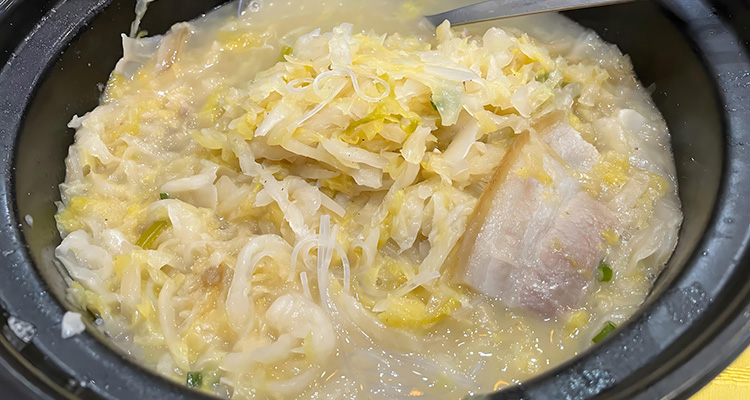Northeastern Sauerkraut & Pork: A Cozy Winter Stew
1. Origin & History of Northeastern Sauerkraut with Pork
Imagine a steaming pot of sauerkraut and pork in a snow-covered winter. The sour cabbage scent drifts in the air and pork melts on your tongue. This dish is Northeastern sauerkraut with pork, a classic comfort stew from China’s northeast.
The dish began in the Dongbei (Northeast) region among the Manchu people centuries ago. In harsh winters, locals fermented napa cabbage into sauerkraut (suancai) to preserve vegetables. Then they cooked it with rich pork. Over time, this humble method became a beloved regional staple.
2. Cultural Meaning & Warmth in Every Bite
In Northeast China, this stew is more than food. It means family gathering, warm hospitality, and home. During festivals or when guests visit, serving a big pot shows sincerity and generosity. It turns any meal into a cozy, emotional feast.
The sour taste, the melt-in-your-mouth pork, and the hearty broth tie you to that northern spirit. It’s not just a dish—it’s a story of place and people.
3. Key Ingredients & Taste Profile
To make the authentic experience, two main ingredients must shine:
- Pork belly (fatty & lean mix) — Fresh, juicy, balanced in fat so it’s rich but not greasy
- Homemade sauerkraut (suancai) — Fermented napa cabbage with a crisp sour aroma
Sometimes people add vermiculite noodles (粉条, fěntiáo) or tofu to layer in texture. The sourness cuts the fat; the pork enriches the broth; together they deliver depth and balance.

4. Step-by-Step Cooking (Simple but Careful)
- Boil a whole chunk of pork belly until cooked, then slice thinly.
- Shred the sauerkraut.
- Place meat and sauerkraut in a large pot, add clear broth or water.
- Simmer on low heat for about 1 hour. Let flavors meld and fat dissolve into the soup.
When the cabbage is soft, the meat is tender, and the broth is rich, it’s ready.
5. Flavor & Texture That Captivates
What stays in your memory is the sour-savory harmony. Sauerkraut refreshes your palate. Pork is tender, fatty yet clean. The broth feels warm and full. Each spoonful awakens your senses and lingers.
This texture layering—crisp cabbage, soft meat, deep broth—makes the dish unforgettable.
6. How to Eat It Like a Local
Serve a bowl of hot sauerkraut pork stew with steamed rice or buns (mantou). Add a touch of garlic paste, chili oil, or leek flower sauce to spice things. The contrast of crunchy sauerkraut and tender pork is magical.
Always eat it when it’s hot—just off the stove is when the aroma and flavor peak.

7. Where to Try the Real Thing
Here are some restaurants known for authentic Northeastern sauerkraut pork:
- Lao Chang Spring Pancake (Harbin)
- Liu Laogen Grand Stage Restaurant (Shenyang)
- Northeast Family Restaurant (Changchun)
Expect to spend ¥50–100 per person. When ordering, just say, “A serving of sauerkraut pork, please”. You’ll usually get rice and complimentary side dishes.
8. Tourist Tips & English Name
The dish is known in English as “Northeastern Sauerkraut with Pork”. Try it right away—when it’s fresh and hot. In addition, enjoy it with northeastern beer or millet porridge to complete your northern cuisine experience.
9. Easy Home Version to Try
You can try a simpler version at home:
- Buy store-bought sauerkraut
- Slice pork belly, add to pot with sauerkraut
- Simmer for 30–40 minutes
- Season with salt and pepper
- Serve with rice
It won’t be quite as rich as in a restaurant, but it captures a bit of that Dongbei flavor.
This dish isn’t just food—it’s a journey into China’s northern culinary culture. Add Northeastern sauerkraut with pork to your must-eat list. Let the sour, savory aroma warm you and make your trip north more memorable.


